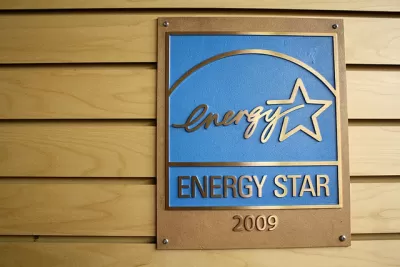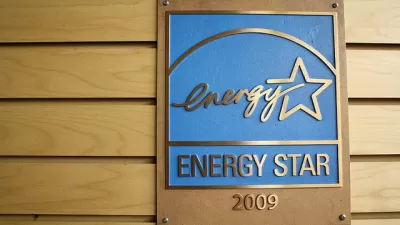According to an analysis by the Energy Efficiency for All coalition, California's Energy Savings Assistance Program could be four times as effective for low-income renters if it were better deployed.

California's Energy Savings Assistance Program has the potential to achieve four times the savings it currently does "if the California Public Utilities Commission (CPUC) approves increased investments, new measures, and innovative program delivery models," Maria Stamas and Jose Torres write.
That's based on a report by the Energy Efficiency for All coalition, which finds that as much as $200 million in utility bill savings are currently going unrealized. Part of the problem may be housing type: "at least one-third of those eligible for California's low-income energy efficiency assistance live in multifamily buildings, yet energy efficiency programs have historically underserved these residents."
At the same time, Stamas and Torres say, lower-income households tend to spend a larger proportion of their income on energy, and often live in older, poorly insulated rental housing with less efficient appliances. They're also likely to live closer to pollution sources like freeways and power plants.
By adopting better program design, funding models, and performance goals (more in the article) over the next 14 years, California's four largest investor-owned utilities could save 934 gigawatt hours of electricity, according to the report.
FULL STORY: Report: $200M in Renters’ Bill Savings Left on the Table

Study: Maui’s Plan to Convert Vacation Rentals to Long-Term Housing Could Cause Nearly $1 Billion Economic Loss
The plan would reduce visitor accommodation by 25,% resulting in 1,900 jobs lost.

North Texas Transit Leaders Tout Benefits of TOD for Growing Region
At a summit focused on transit-oriented development, policymakers discussed how North Texas’ expanded light rail system can serve as a tool for economic growth.

Why Should We Subsidize Public Transportation?
Many public transit agencies face financial stress due to rising costs, declining fare revenue, and declining subsidies. Transit advocates must provide a strong business case for increasing public transit funding.

How to Make US Trains Faster
Changes to boarding platforms and a switch to electric trains could improve U.S. passenger rail service without the added cost of high-speed rail.

Columbia’s Revitalized ‘Loop’ Is a Hub for Local Entrepreneurs
A focus on small businesses is helping a commercial corridor in Columbia, Missouri thrive.

Invasive Insect Threatens Minnesota’s Ash Forests
The Emerald Ash Borer is a rapidly spreading invasive pest threatening Minnesota’s ash trees, and homeowners are encouraged to plant diverse replacement species, avoid moving ash firewood, and monitor for signs of infestation.
Urban Design for Planners 1: Software Tools
This six-course series explores essential urban design concepts using open source software and equips planners with the tools they need to participate fully in the urban design process.
Planning for Universal Design
Learn the tools for implementing Universal Design in planning regulations.
City of Santa Clarita
Ascent Environmental
Institute for Housing and Urban Development Studies (IHS)
City of Grandview
Harvard GSD Executive Education
Toledo-Lucas County Plan Commissions
Salt Lake City
NYU Wagner Graduate School of Public Service





























